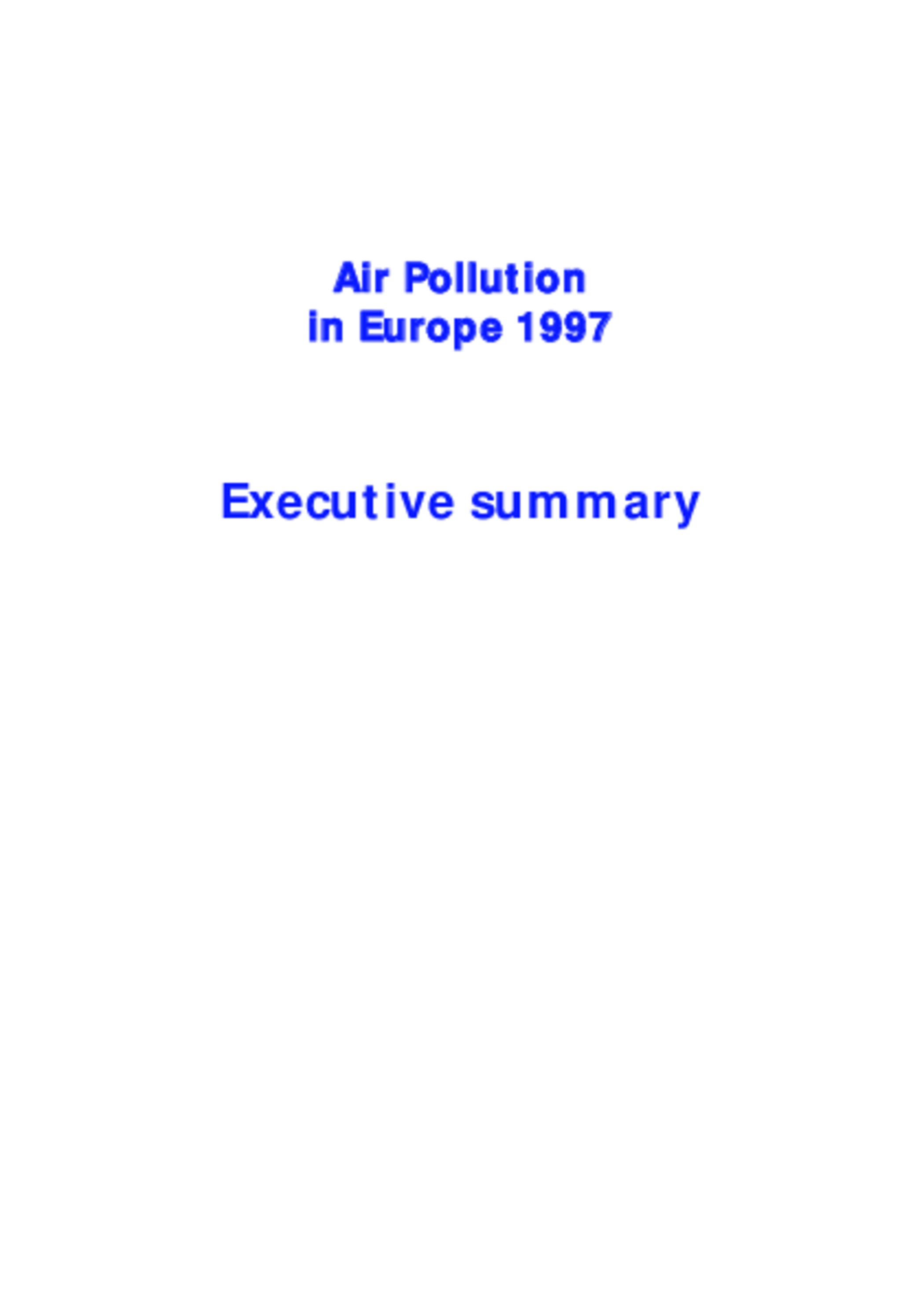All official European Union website addresses are in the europa.eu domain.
See all EU institutions and bodies- Danish PDF - Luftforurening i Europa 1997 (0.07MB)
- Dutch PDF - Luchtverontreiniging in Europa 1997 (0.07MB)
- Finnish PDF - Ilman saastuminen Euroopassa 1997 (0.06MB)
- French PDF - La pollution atmosphérique en Europe en 1997 (0.07MB)
- German PDF - Luftverschmutzung in Europa 1997 (0.09MB)
- Portuguese PDF - A Poluição Atmosférica na Europa em 1997 (0.11MB)
- Spanish PDF - Contaminación atmosférica en Europa 1997 (0.06MB)
- Swedish PDF - Luftföroreningar i Europa 1997 (0.07MB)

